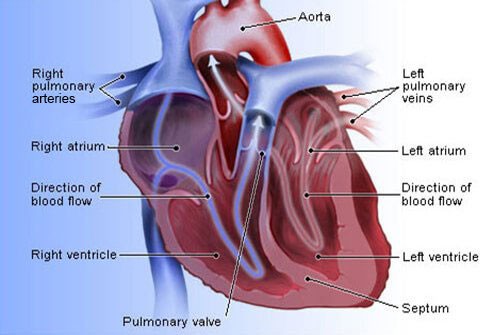
Diagnosed with Cancer? Your two greatest challenges are understanding cancer and understanding possible side effects from chemo and radiation. Knowledge is Power!
Learn about conventional, complementary, and integrative therapies.
Dealing with treatment side effects? Learn about evidence-based therapies to alleviate your symptoms.
Click the orange button to the right to learn more.
- You are here:
- Home »
- Blog »
- side effects ID and prevention »
- PolyPill for Heart Failure
PolyPill for Heart Failure

Taking a polypill for heart failure, according to research, may have real benefits. But, like all conventional medications, there are strengths and weaknesses, pros and cons for anyone considering this therapy.
I am a cancer survivor who developed chemotherapy-induced cardiomyopathy and atrial fibrillation as a long-term side effect of my cardiotoxic chemo regimens. At this point in my cancer survival, I am more likely to die of one of my treatment-induced side effects than I am of my original cancer.
Heart failure is right at the top of this list of possible causes of death.
As such, I have researched and have developed a number of heart-healthy evidence-based therapies that have either stabilized or improved my heart metrics.
Evidence-based heart healthy therapies include:
- Nutrition (I follow a Meditteranean diet but there are others)
- Nutritional supplementation
- Lifestyle therapies such as sauna, moderate exercise, etc.
But I am the first person to admit that there are many people in this world who are either at-risk for HF or already exhibit different heart problems who would benefit from a polypill.
To put this sentiment differently, I admit that I have the incentive to pursue the non-conventional therapies above (cancer survivor with a number of long-term side effects) as well as the time (I am an empty nester) so I may be sort of an outlier in this regard.
Therefore, for someone who is “at risk” of heart failure, taking one single pill that contains
- antiplatelet agents,
- beta-blockers,
- renin-angiotensin system blockers
- and statins
could reduce your risk of stroke, reduce your cholesterol, reduce your BP, etc. all with one pill. Hopefully the medication is covered by your insurance and does not cause you any side effects.
What are the pros and cons of a poly pill for heart failure?
Pros:
- Convenience: Taking multiple medications separately can be cumbersome and may lead to missed doses. A poly pill simplifies the regimen, making it easier for patients to adhere to their treatment plan.
- Improved Adherence: Simplifying the medication regimen can improve patient adherence. This is particularly beneficial in chronic conditions like heart failure where consistent medication usage is crucial for managing symptoms and preventing complications.
- Cost-effective: Combining medications into a single pill may reduce overall healthcare costs by eliminating the need for multiple prescriptions and reducing the frequency of doctor visits.
- Standardized Dosage: With a poly pill, the dosage of each medication is pre-determined and consistent, reducing the likelihood of dosage errors.
Cons:
- Limited Flexibility: Combining medications into a single pill means that dosage adjustments for individual components may be challenging. Some patients may require different dosages of specific medications based on their unique needs, which a poly pill may not accommodate.
- Potential for Drug Interactions: Combining multiple medications into one pill increases the risk of drug interactions. This can be particularly concerning in patients who are taking other medications for comorbid conditions.
- Side Effects: Some patients may experience side effects from one or more components of the poly pill. When medications are combined, it may be difficult to identify which component is causing the side effect, making it challenging to adjust the treatment regimen accordingly.
- Loss of Tailored Therapy: Individuals with heart failure may have different underlying causes or coexisting conditions that require tailored treatment approaches. A poly pill may not address these individual needs as effectively as separate medications prescribed based on specific patient characteristics.
- Regulatory Challenges: Developing and regulating poly pills can be complex, as it involves combining multiple medications into a single formulation. Regulatory agencies must ensure the safety, efficacy, and quality of these products, which may pose challenges during the approval process.
David Emerson
- Cancer Survivor
- Cancer Coach
- Director PeopleBeatingCancer
One Pill for Them All: Polypill Therapy for the Prevention of Cardiovascular Disease
“Interventions to promote healthy lifestyles and simplify pharmacotherapy regimens are available, however, implementation of the concepts remain challenging. Historically, this has been driven by:
- limited access to medical care,
- cost of treatment,
- lack of healthcare coverage,
- and patient related factors (e.g., poor adherence, poor health literacy, polypharmacy).1
As such, the notion of a fixed-drug combination in one pill – “the polypill” – represents a potential strategy to enhance cardiovascular prevention efforts at a population level.2 Traditionally, polypills combine lipid and blood pressure lowering therapy (with or without aspirin) and have been tested in low/middle income populations at increased risk of cardiovascular disease3 (CVD) (Table 1)…
Conclusion- Fixed-dose combination therapy (polypill) with or without aspirin is associated with greater reductions in cardiovascular risk factors and major cardiovascular events when compared to usual care, placebo, or active comparators.
These benefits are offset, to some degree, by the fact that polypills may not be well tolerated in some individuals. Barriers to polypill implementation may be overcome with a hybrid approach, marrying population-based and risk-based strategies (with the addition of imaging) for the prevention of CVD.”


